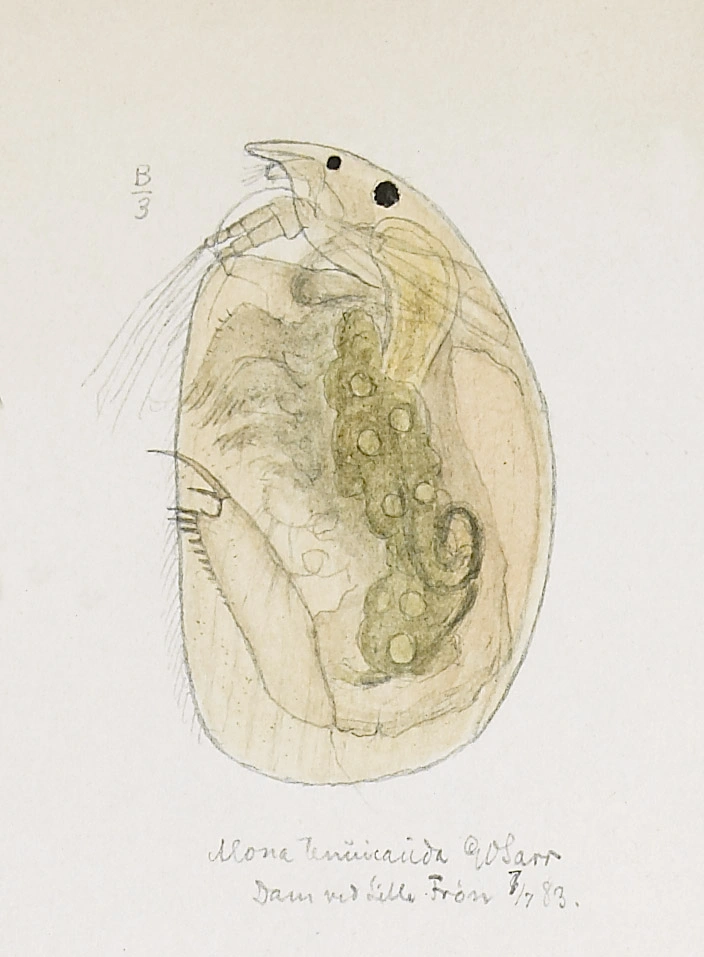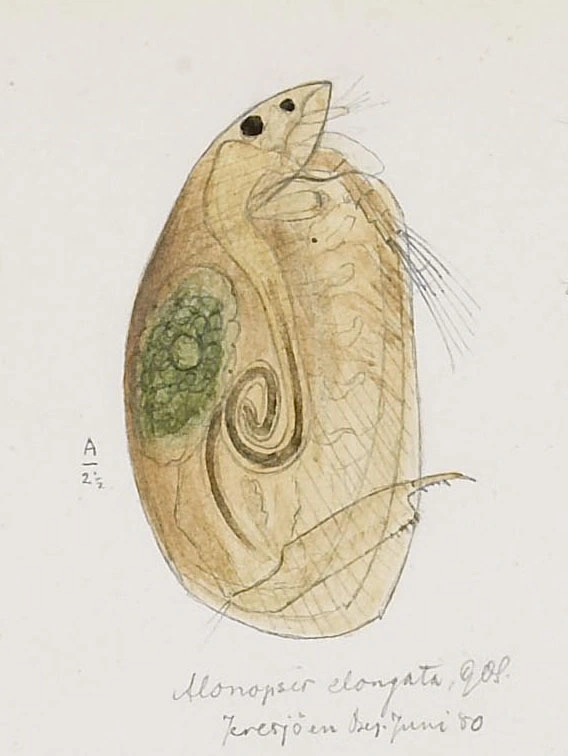Oxyurella tenuicaudis
Oxyurella tenuicaudis may be mixed up with Alonopsis elongata, but is distinguished from this species by the strong teeth fastened to the ventral corner of its postabdomen. Most often it is found in small ponds rich in vegetation.
Key characteristics
Oxyurella tenuicaudis (female)
Originally, Sars ascribed Oxyurella tenuicaudis to the genus Alona because he found similarities with Alona quadrangularis, though this species is almost twice as large. Like in Alona, the posterior margin of the carapace is more than half the maximum height. Its head is, however, comparatively shorter. The post abdomen is long and thin and its width is almost uniform throughout. The denticles fastened to the posterior edge are anteriorly very small, but their length increase towards the ventral corner. Here they are larger than in any other chydorid. The colour is yellow, sometimes with elements of brown.
Female: Length 0.5–0.8 mm
Male: Length 0.4–0.5 mm
Ecology and distribution
O. tenuicaudis is recorded from a limited number of localities in the vicinity of Oslo where this species was also found for the first time by G.O. Sars. The localities are situated 3–242 m a.s.l. and except for two, the surface area is less than 1 ha. O. tenuicaudis is normally found in small ponds, rich in water vegetation. pH is varying between 6.0 and 8.2, while conductivity is within the range 7–56 mS/m.
| Vitenskapelig navn | < 4,5 | 4,5 - 4,9 | 5,0 - 5,4 | 5,5 - 5,9 | 6,0 - 6,4 | 6,5 - 7,0 | 7,0 - 7,4 | > 7,5 |
|---|---|---|---|---|---|---|---|---|
| 0 | 0 | 0 | 0 | 0,6 | 0,3 | 1,8 | 6,3 |
| Vitenskapelig navn | < 1,0 | 1,0 - 1,4 | 1,5 - 1,9 | 2,0 - 2,9 | 3,0 - 3,9 | 4,0 - 4,9 | 5,0 - 6,9 | 7,0 - 9,9 | > 10,0 |
|---|---|---|---|---|---|---|---|---|---|
| 0 | 0 | 0 | 0 | 0 | 0 | 0 | 1,9 | 5,3 |
| Vitenskapelig navn | < 0,01 | 0,01 - 0,09 | 0,1 - 0,9 | 1,0 - 9,9 | 10,0 - 99 | 100 - 999 | > 1000 |
|---|---|---|---|---|---|---|---|
| 0 | 3 | 0,5 | 1,1 | 0,1 | 0,5 | 2,2 |
| Vitenskapelig navn | < 100 | 100-299 | 300-499 | 500-699 | 700-999 | >1000 |
|---|---|---|---|---|---|---|
| 1,1 | 1,6 | 0 | 0 | 0 | 0 |
Look-alikes
Alonopsis elongata

